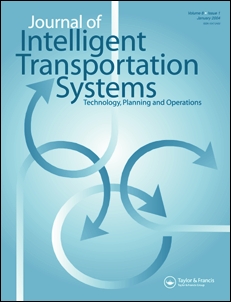Special Issue on Dense Surveillance System for Urban Traffic
Traffic congestion and safety are serious problems in modern cities. Recurrent congestion happens during the morning/evening rush hours due to demand exceeding capacity, while non-recurrent incident congestion can happen due to unexpected events. Generally, about 40% of traffic congestion is attributed to individual incidents including traffic collisions. In urban areas, vehicle disablements and low-speed collisions on local and arterial roads can cause traffic congestion, partly due to police response, e.g., to address “fault” and related liability issues. Adverse weather and presence of special events or peak hours can further exacerbate incident-induced congestion and even cause secondary incidents. These problems can be at least partially addressed by a “dense video surveillance system.” Such systems deploy cameras in close proximity along roads and at intersections that capture real-time videos from different angles. If a low-speed traffic collision (or a disablement) occurs, then the recordings can easily identify the situation and help police respond efficiently as well as re-construct a crash using video recordings. Traffic congestion can be reduced or avoided through quick response by police and the dense surveillance system providing a more complete video record of the incident to assist in identifying traffic accident liability.
In this special issue, we will focus on the developments in dense video surveillance systems and its applications in urban traffic. For such a video surveillance system, camera nodes are densely deployed at intersections and along roads. These nodes form a wireless sensor network, which can be energy intensive. To provide energy-savings, low-complexity video coding and power control can be used. Hence, we will look for contributions describing how camera nodes can be robustly used stably and for longer time periods. In the last few decades, Artificial Intelligence (AI) tools have greatly contributed to Intelligent Transportation Systems (ITS) in general and to traffic video analysis in particular, showing potential to solving hard problems. Meanwhile, publication activity has accelerated on using deep learning for traffic trajectory analysis and tracing. This special issue hopes to discuss how new video surveillance systems can support key functions needed to operate transportation systems.
This special issue will provide a highly recognized international forum for presenting innovative developments of dense video surveillance systems applied to avoiding urban traffic congestion. Note that traffic congestion avoidance is not the only potential application of dense video surveillance systems, and we also welcome papers on their application for improving safety. The ultimate objective is to bring together well-focused, top quality research contributions, providing the ITS research community an opportunity to get an overall view of recent developments. The issue will identify the most promising avenues and promote the visibility and relevance of AI and wireless sensor network techniques. The intent is to raise collective awareness of the domain of dense video surveillance as a promising area to be pursued by the ITS research community.
Topics Covered
- Applications of dense surveillance systems for traffic operations and identifying or reconstructing traffic incidents on roadways
- Wireless sensor networks used in transportation systems
- Wireless communications applied in transportation
- Video capturing, compression and transmission
- 3D compression and analysis of traffic video
- Coding of multi-view traffic video
- Power control applications of traffic monitoring nodes
- Energy-saving coding of traffic monitoring nodes
- Low-complexity coding of traffic video
- Video analysis of transportation systems
- Vehicular trajectory analysis and tracing
- Deep learning applied in transportation
- Pattern recognition for transportation systems
Editorial information
Guest editor: Yong Fang, Chang’an University, China
Guest editor: Gwanggil Jeon, Incheon National University
Guest editor: Marco Anisetti, University of Milan



